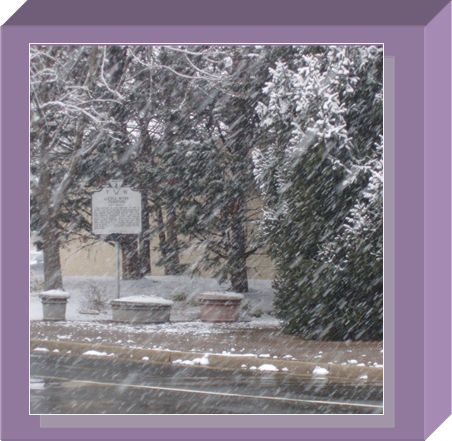Storms are Coming: What is Your Battle Plan?

VDOT requests that before a storm, residents put all cars in their driveway, leaving the street clear for plowing, especially on cul-de-sacs. If that is not possible, park on the odd number side of the street.
The Virginia Department of Transportation’s neighborhood plowing website and plow-tracking program will again be among tools the agency will use this winter in northern Virginia. Residents are encouraged to continue using vdotplows.org to monitor the status of plowing in Northern Virginia neighborhoods. Once it snows more than two inches, residents can enter their address and a color-coded snow map shows whether plowing is underway, completed or not yet started in their neighborhood.
The county offers advice at their snow website fairfaxcounty.gov/snow on the following topics:
- VDOT Snow Removal Information (and plow tracker)
- Weather Forecast and Expected Snowfall (updated daily)
- Who Maintains Roads/Sidewalks
- 8 Places to Consider Shoveling Snow
- Tips for Creating a Neighborhood Snow Removal Plan
- The Trick to Properly Shovel Your Driveway for When Snow Plows Pass
- Snow Shoveling Safety
BEWARE: When recent rain or snow melt comes into contact with freezing temperatures, black ice can form — and you might not even see it. And while black ice is more prevalent at night, it can often stick around for the morning commute. Use extreme caution when driving or walking.
Hotline to VDOT Plowing Central:
1-800-367-7623 or novaifo@vdot.virginia.gov
Local VDOT: 703-383-8368
Supervisor Penny Gross: 703-256-7717
Supervisor James Walkinshaw: 703-425-4044
Power Outages
Dominion: Report a power outage online here or call 1-866-366-4357
Utilities:
Verizon: 1-800-837-4966
Cox: 703-378-8422
Washington Gas Emergency: 844-927-4427
Roof Repairs and Replacement: WISA
Roofing Concerns:
Business Preparedness Checklist
How ready is your business to weather a disaster?
A recent survey revealed that 74% of American small businesses do not have a disaster plan, 84% do not have adequate insurance, and 71% lack a back-up generator. According to FEMA, 40 percent of small businesses never reopen after a disaster and another 25 percent, that do reopen, fail within a year. It is important for the business itself, their employees, and the community to get back into business as soon as possible. Disasters to consider: Hurricanes, Tornadoes & Severe Storms, Floods, Wildfires, Earthquakes and Drought.
PREPARE IN ADVANCE AND REGULARLY:
- Assembled a “team” of individuals within the business who know key operations and can provide important perspectives when planning for and responding to disasters.
- Assigned someone to lead business disaster planning efforts for your business.
- Organized all your critical documents and information so they are easily accessible when needed most.
- Identified and prioritized which business operations are critical so you know what to recover first, second, etc.
- Identified the possible hazards (natural and man-made) which could interrupt your business.
- Developed continuity or emergency procedures so you can continue to provide products or services after a disaster.
- Make accessible all important data or files for decision-making if you were unable to access your facility, e.g. after a fire.
- Maintain updated emergency contact information for employees, vendors, suppliers, customers, and other key contacts?
HAVE YOU:
- Trained employees to assist (e.g. respond to injuries, evacuate the building ) when an emergency occurs?
- Maintained emergency supplies for your businesses to address immediate needs, such as if employees are unable to go home?
- Encouraged employees to be prepared at home?
- Regularly backed-up your data?
- Taken steps to safeguard against potential damage to your equipment, buildings or facilities?
- Protected inventory/storage from theft, loss or damage during an earthquake, fire, water pipe break, etc.? Maintained procedures to communicate after a disaster with employees, suppliers, vendors, customers, and the public?
- Put a current continuity/emergency/disaster plan in place?
- Established partnerships with other businesses, government and/or community organizations that can serve as resources when the next crisis arrives. If YES, also store your data back-ups offsite, test it regularly and update it at least annually.
Information for business owners and managers provided by the US Chamber Foundation, Shell, and FEMA.


